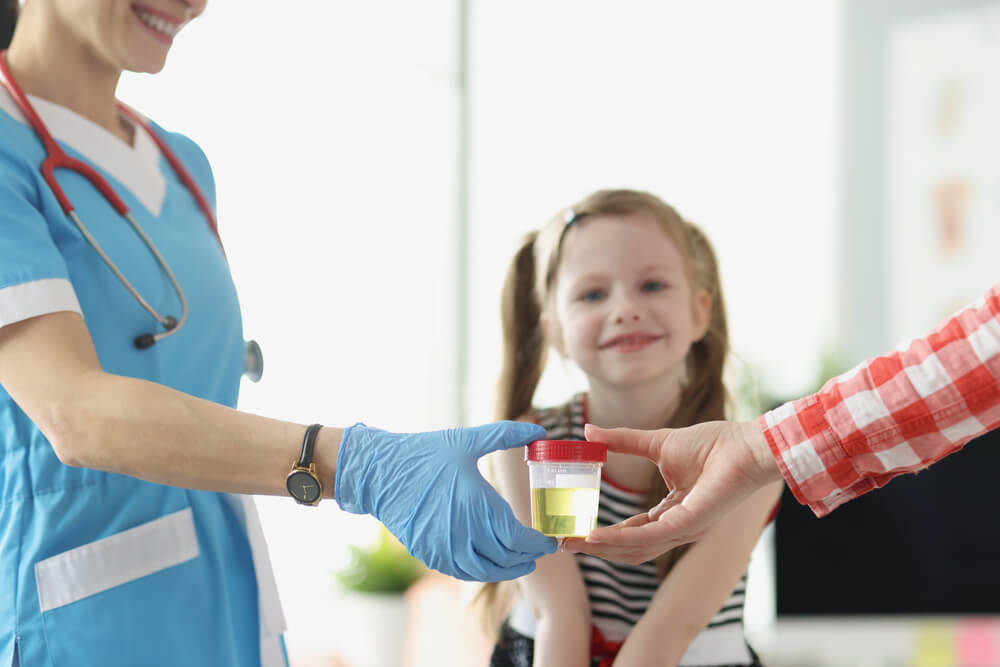E. coli, short for Escherichia coli, is a type of bacteria commonly found in the intestines of both humans and animals. While most strains are harmless, certain strains can cause infections that lead to a range of symptoms, especially in toddlers and kids.
In this comprehensive guide, the team at Worldwide Pediatrics Group explores what parents need to know about E. coli in young children, from the symptoms to preventive measures and treatment options.
Understanding E. coli
Escherichia coli is a diverse group of bacteria, and not all strains are harmful. In fact, many types are essential for maintaining a healthy digestive system. However, some strains of E. coli, such as E. coli O157:H7, can produce toxins that cause illness. Transmission can occur through contaminated food, water, or contact with infected animals or people.
E. coli in Toddlers and Kids
Toddlers and kids are particularly susceptible to E. coli infections due to their developing immune systems and the propensity for close contact with contaminated environments. Common sources of infection include undercooked ground beef, unpasteurized milk, raw vegetables, and contact with animals on farms or in petting zoos.
 Symptoms of E. coli in Children
Symptoms of E. coli in Children
Recognizing the symptoms of E. coli in toddlers and kids is crucial for prompt intervention. While symptoms can vary, common signs include:
Gastrointestinal Distress
- Abdominal cramps
- Nausea and vomiting
- Diarrhea (which may be bloody)
Fever
- Elevated body temperature may accompany gastrointestinal symptoms.
Dehydration
- Especially concerning in younger children, dehydration can result from persistent diarrhea and vomiting.
Urinary Tract Infections (UTIs)
- E. coli can cause infections in the urinary tract, leading to discomfort and changes in urination patterns.
Hemolytic Uremic Syndrome (HUS)
- In severe cases, E. coli infection can progress to HUS, a rare but serious condition that affects the kidneys, blood, and blood vessels.
Prevention Measures
Proactively safeguarding toddlers and kids from E. coli infections involves implementing a range of preventive measures. Parents can play a pivotal role in minimizing the risk of exposure by adopting the following precautions:
Safe Food Handling
Thorough Cooking of Ground Beef: Ensure that ground beef, a common source of E. coli contamination, is cooked thoroughly. It should reach a safe internal temperature of at least 160°F (71°C). Use a meat thermometer to verify proper cooking.
Avoid Raw or Unpasteurized Dairy Products: Raw or unpasteurized milk and juices pose a potential risk of E. coli contamination. Opt for pasteurized versions to reduce the likelihood of exposure to harmful bacteria.
Proper Hygiene
Frequent Handwashing: Encourage regular and thorough handwashing, particularly before meals and after using the bathroom. Proper handwashing is a fundamental practice in preventing the spread of E. coli and other harmful pathogens.
Teach Children Hand Hygiene: Instruct children on the importance of hand hygiene. Teach them to wash their hands with soap and water for at least 20 seconds, ensuring all surfaces are thoroughly cleaned. Emphasize the significance of avoiding touching their faces, mouths, and noses with unwashed hands.
Water Safety
Safe and Clean Drinking Water: Provide toddlers and kids with safe and clean drinking water. Contaminated water sources can contribute to E. coli infections, so ensuring the safety of the water consumed is essential.
Avoid Contaminated Pools or Water Sources: Discourage swimming in pools or water sources that may be contaminated. E. coli can thrive in water contaminated with fecal matter, making recreational water activities a potential source of infection.
Petting Zoo Precautions
Supervision in Petting Zoos: When visiting petting zoos or areas with animals, supervise children closely to prevent direct contact with animals’ faces or mouths. This reduces the risk of E. coli transmission from animals to children.
Thorough Handwashing After Contact: After any interaction with animals, ensure thorough handwashing with soap and water. This practice minimizes the risk of potential contamination from animal feces, which may carry E. coli bacteria.

Treatment Options for E. coli Infections in Children
When a child displays symptoms of an E. coli infection, prompt medical attention is crucial to manage the condition effectively. While many cases of E. coli infections in children resolve on their own, supportive care measures can significantly aid the recovery process. Here’s a detailed look at the recommended treatment options:
Hydration
Maintain Fluid Intake: Ensuring proper hydration is paramount in managing E. coli infections, as diarrhea and vomiting can lead to dehydration. Encourage your child to drink clear liquids like water, diluted fruit juices, or oral rehydration solutions.
Oral Rehydration Solutions (ORS): These specialized solutions contain a balanced mix of electrolytes and glucose, helping to replace lost fluids and electrolytes more effectively than water alone. ORS can be particularly beneficial in preventing and treating dehydration in children with E. coli infections.
Rest
Allow for Adequate Rest: Rest is a crucial component of the recovery process. During the acute phase of the infection, it is advisable to minimize physical activity to conserve the child’s energy for healing. Ensure your child gets sufficient sleep and rests as needed to support the body’s natural recovery mechanisms.
Avoid Antibiotics
Caution Regarding Antibiotics: In the case of E. coli infections, antibiotics are generally not recommended for routine treatment. In fact, their use can potentially increase the risk of complications and may not significantly impact the course of the illness. Antibiotics may even contribute to a higher likelihood of developing hemolytic uremic syndrome (HUS), a severe complication associated with certain strains of E. coli. Always consult with a healthcare professional before considering antibiotic treatment for an E. coli infection in a child.
Monitoring for Complications
Vigilant Observation: Continuous monitoring of your child’s symptoms is essential, especially if they persist or worsen. Look out for signs of dehydration, such as reduced urine output, dry mouth, or lethargy. If there are indications of severe symptoms or complications, seek immediate medical attention. Additionally, be aware of any changes in the pattern or severity of symptoms, as this information is valuable for healthcare providers in assessing the progression of the infection.
It’s crucial to remember that E. coli infections can vary in severity, and individual responses to the infection differ. While many cases can be managed at home with supportive care, severe or persistent symptoms warrant professional medical evaluation. Always consult with your child’s healthcare provider to determine the most appropriate course of action based on the specific circumstances of your child’s E. coli infection. By combining vigilant care at home with timely medical intervention, parents can play a proactive role in supporting their child’s recovery from an E. coli infection.
Finishing Thoughts
Being informed about E. coli in toddlers and kids empowers parents to take proactive steps in safeguarding their children’s health. Vigilance in recognizing symptoms, implementing preventive measures, and seeking timely medical attention when necessary can contribute to effective management and a quicker recovery. By staying informed and adopting preventative strategies, parents can create a safer environment for their children, minimizing the risk of E. coli infections and ensuring their well-being.
That said if you are looking for general pediatric care in Plantation and Doral, Florida, to learn more about E. coli or other matters related to children’s health, feel free to reach out to us today.



